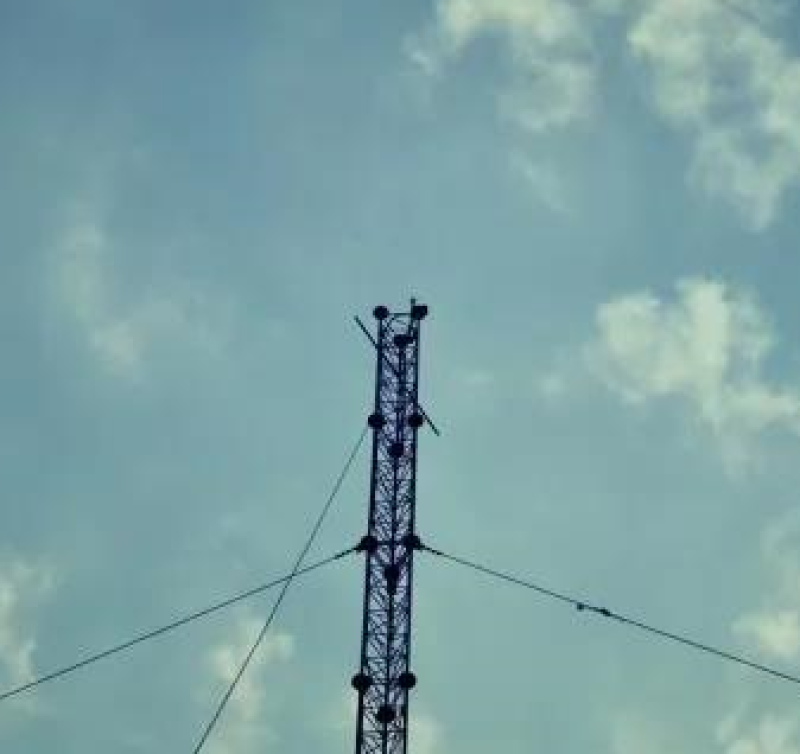

The spatial dataset of climate on the Tibetan Plateau (1961-2020)

The meteorological elements distribution map of the plateau, which is based on the data from the Tibetan Plateau National Weather Station, was generated by PRISM model interpolation. It includes temperature and precipitation. Monthly average temperature distribution map of the Tibetan Plateau from 1961 to 1990 (30-year average values): t1960-90_1.e00,t1960-90_2.e00,t1960-90_3.e00,t1960-90_4.e00,t1960-90_5.e00, t1960-90_6.e00,t1960-90_7.e00,t1960-90_8.e00,t1960-90_9.e00,t1960-90_10.e00, t1960-90_11.e00,t1960-90_12.e00 Monthly average temperature distribution map of the Tibetan Plateau from 1991 to 2020 (30-year average values): t1991-20_1.e00,t1991-20_2.e00,t1991-20_3.e00,t1991-20_4.e00,t1991-20_5.e00, t1991-20_6.e00,t1991-20_7.e00,t1991-20_8.e00,t1991-20_9.e00,t1991-20_10.e00, t1991-20_11.e00,t1991-20_12.e00, Precipitation distribution map of the Tibetan Plateau from 1961 to 1990 (30-year average values): p1960-90_1.e00,p1960-90_2.e00,p1960-90_3.e00,p1960-90_4.e00,p1960-90_5.e00, p1960-90_6.e00,p1960-90_7.e00,p1960-90_8.e00,p1960-90_9.e00,p1960-90_10.e00, p1960-90_11.e00,p1960-90_12.e00 Precipitation distribution map of the Tibetan Plateau from 1991 to 2020 (30-year average values): p1991-20_1.e00,p1991-20_2.e00,p1991-20_3.e00,p1991-20_4.e00,p1991-20_5.e00, p1991-20_6.e00,p1991-20_7.e00,p1991-20_8.e00,p1991-20_9.e00,p1991-20_10.e00, p1991-20_11.e00,p1991-20_12.e00, The temporal coverage of the data is from 1961 to 1990 and from 1991 to 2020. The spatial coverage of the data is 73°~104.95° east longitude, 26.5°~44.95° north latitude, and the spatial resolution is 0.05 degrees×0.05 degrees (longitude×latitude), and it uses the geodetic coordinate projection. Name interpretation: Monthly average temperature: The average value of daily average temperature in a month. Monthly precipitation: The total precipitation in a month. Dimensions: The file format of the data is E00, and the DN value is the average value of monthly average temperature (×0.01°C) and the average monthly precipitation (×0.01 mm) from January to December. Data type: integer Data accuracy: 0.05 degrees × 0.05 degrees (longitude × latitude). The original sources of these data are two data sets of 1) monthly mean temperature and monthly precipitation observation data from 128 stations on the Tibetan Plateau and the surrounding areas from the establishing times of the stations to 2000 and 2) HadRM3 regional climate scenario simulation data of 50×50 km grids on the Tibetan Plateau, that is, the monthly average temperature and monthly precipitation simulation values from 1991 to 2020. From 1961 to 1990, the PRISM (Parameter elevation Regressions on Independent Slopes Model) interpolation method was used to generate grid data, and the interpolation model was adjusted and verified based on the site data. From 1991 to 2020, the regional climate scenario simulation data were downscaled to generate grid data by the terrain trend surface interpolation method. Part of the source data came from the results of the GCM model simulation; the GCM model used the Hadley Centre climate model HadCM2-SUL. a) Mitchell JFB, Johns TC, Gregory JM, Tett SFB (1995) Climate response to increasing levels of greenhouse gases and sulphate aerosols. Nature, 376, 501-504. b) Johns TC, Carnell RE, Crossley JF et al. (1997) The second Hadley Centre coupled ocean-atmosphere GCM: model description, spinup and validation. Climate Dynamics, 13, 103-134. The spatial interpolation of meteorological data adopted the PRISM (Parameter-elevation Regressions on Independent Slopes Model) method: Daly, C., R.P. Neilson, and D.L. Phillips, 1994: A statistical-topographic model for mapping climatological precipitation over mountainous terrain. J. Appl. Meteor., 33, 140~158. Due to the difficult observational conditions in the plateau area and the lack of basic research data, there were deletions of meteorological data in some areas. After adjustment and verification, the accuracy of the data was only good enough to be used as a reference for macroscale climate research. The average relative error rate of the monthly average temperature distribution of the Tibetan Plateau from 1961 to 1990 was 8.9%, and that from 1991 to 2020 was 9.7%. The average relative error rate of precipitation data on the Tibetan Plateau from 1961 to 1990 was 20.9%, and that from 1991 to 2020 was 22.7%. The area of missing data was interpolated, and the values of obvious errors were corrected.
The Spatial Data Set of Climate in the Tibetan Plateau(1961-2020).The Big Data Infrastructure for the Pan-Third Pole Environment .2018
To respect the intellectual property rights, protect the rights of data authors, expand services of the data center, and evaluate the application potential of data, data users should clearly indicate the source of the data and the author of the data in the research results generated by using the data (including published papers, articles, data products, and unpublished research reports, data products and other results). For re-posting (second or multiple releases) data, the author must also indicate the source of the original data. Project source:National Basic Research Program of China-The Response of Environmental Changes on Tibetan Plateau to Global Changes and Adaptation Strategy (2005CB422005). Contact: Caiping Zhou, E-mail: zhoucp@igsnrr.ac.cn, Tel: 010-64889813.
青藏高原环境变化对全球变化的响应及其适应对策(2005CB422000)
No record
No record
No record
Sign In to add comments

三江源国家公园星空地一体化生态监测数据平台 © 2018-2021 陇ICP备05000491号 | All Rights Reserved
|  京公网安备11010502040845号
京公网安备11010502040845号
数据中心技术支持: 数云软件